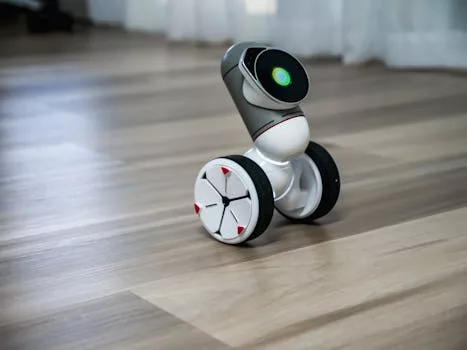
“
The Convergence of AI and Wearables: Shaping the Future of Personal Tech in 2025
The Convergence of AI and Wearables: Shaping the Future of Personal Tech in 2025 is a rapidly evolving field that is transforming the way we live, work, and interact with technology. With the increasing use of artificial intelligence (AI) and wearable devices, we are witnessing a significant shift in the way we approach personal tech. In this article, we will explore the convergence of AI and wearables and its impact on the future of personal technology.
Introduction to AI and Wearables
AI refers to the development of computer systems that can perform tasks that typically require human intelligence, such as learning, problem-solving, and decision-making. Wearables, on the other hand, are devices that are worn on the body, such as smartwatches, fitness trackers, and augmented reality (AR) glasses. The combination of AI and wearables has given rise to a new generation of personal tech devices that are smart, intuitive, and highly personalized. For more insights on this topic, check out our article on The Convergence of AI and Wearables.
Applications of AI-powered Wearables
AI-powered wearables have a wide range of applications, from health and fitness to entertainment and education. Some examples of AI-powered wearables include:
- Smartwatches that track fitness goals and provide personalized recommendations
- AR glasses that overlay digital information onto the real world
- Health monitors that detect early warning signs of diseases and provide personalized feedback
- Smart clothing that adjusts to changing environmental conditions
Benefits of AI-powered Wearables
The benefits of AI-powered wearables are numerous and far-reaching. Some of the most significant advantages include:
- Improved health and wellness
- Enhanced productivity and efficiency
- Increased safety and security
- Personalized entertainment and education
Challenges and Limitations
While AI-powered wearables have the potential to revolutionize personal tech, there are also several challenges and limitations that need to be addressed. Some of the most significant concerns include:
- Privacy and security risks
- Dependence on data quality and accuracy
- Limited battery life and charging capabilities
- High cost and limited accessibility
Conclusion
In conclusion, the convergence of AI and wearables is shaping the future of personal tech in 2025. With its numerous benefits and applications, AI-powered wearables have the potential to transform the way we live, work, and interact with technology. However, it is essential to address the challenges and limitations associated with these devices to ensure that they are safe, secure, and accessible to all. For a deeper dive into the innovations in this space, read our post on Wearable Tech Innovations 2025.



1 thought on “The Convergence of AI and Wearables: Shaping the Future of Personal Tech in 2025”
Comments are closed.